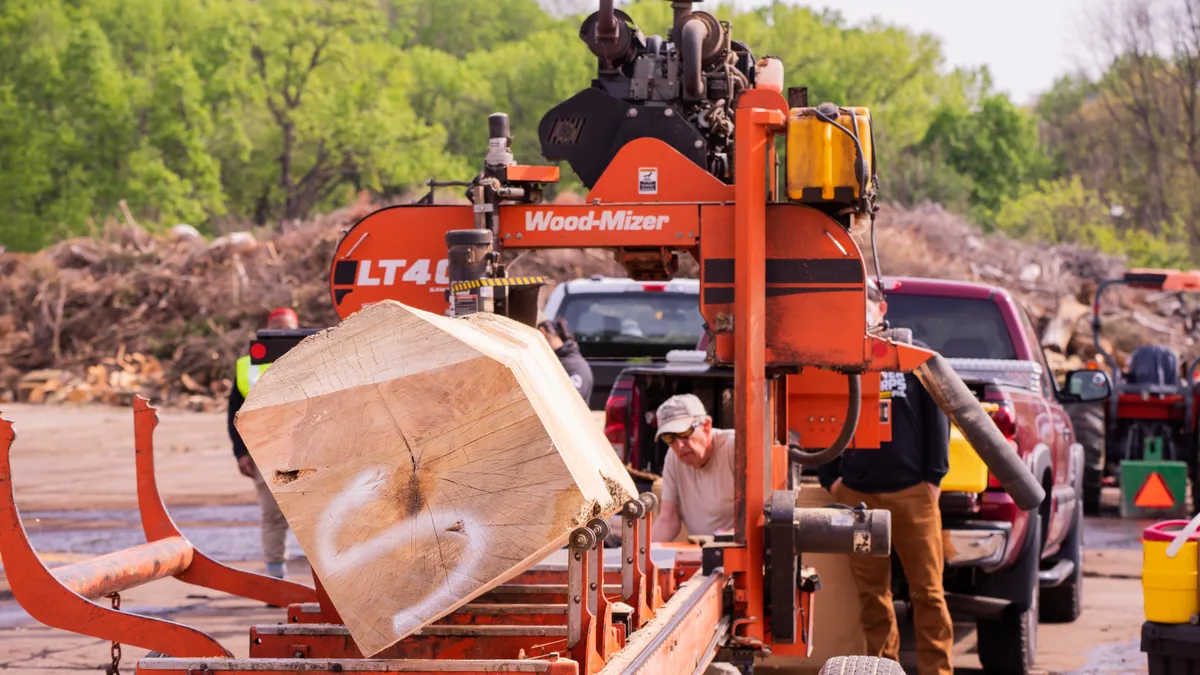Many dead or fallen trees in Philadelphia face an unglamorous fate as wood chips or mulch. But now, the city has bigger plans for some of its wood waste: Mill it into building material — and rake in some of the profits to support Philadelphia’s urban forestry plans.
Here’s how Philadelphia’s recently launched “reforestation hub” works, according to Marisa Repka, co-founder of Cambium, Philadelphia’s partner in the project: Waste logs and branches from across the city are brought to an existing organics recycling center. Suitable logs are processed at an on-site sawmill operated by Cambium. The company finds buyers interested in sustainable wood products, from furniture manufacturers to architects, and gives 15% of the profits to TreePhilly, the city’s urban forestry program.
The approach represents a new model among U.S. cities to find more value in waste wood not typically used by industry, Repka said. “The U.S. has this massive wood waste problem,” Repka said. “There [are] about 36 million trees that fall in U.S. cities each year.”
The city doesn’t pay Cambium anything; it offers Cambium a concession instead. “They basically are allowed to use our space, but we get something in return,” said Natalie Walker, sustainability director for Philadelphia Parks & Recreation.
City forests are not typically planted for wood salvage, Repka said. Typically, they include more hardwood species not commonly used by industry. “Part of our work is educating a customer that ‘Hey, maybe you haven't used Sycamore or London Plane wood as a building material before, and here's what you can do with it,’” Repka said.
One benefit of this model is that wood products can be made without cutting down healthy trees in forests, Repka said. “These are logs that whether or not we were there would be generated through the course of forest maintenance activity,” Repka said. City trees may be removed because they are hazards or to prevent the spread of pests, or to clear room for new construction. Repka added that the project saves the city money in disposal costs.
The hub is staffed with participants in a job training program run by PowerCorpsPHL. Participants learn equipment safety and handling, carpentry skills and even entrepreneurship, Repka said. She pointed to one graduate who got a full-time job with the city after completing the program.
It’s not yet clear how much money the city will get from the project since it’s so new, Repka and Walker said. But the city is already looking at low-cost, low-effort ways to bring in even more wood waste to be milled at the hub, Walker explained. That could mean grants or partnerships with higher education institutions.
More communities may follow in Philadelphia’s footsteps. Cambium has worked with about a dozen U.S. cities, Repka said, and many more have expressed interest. “It’s just a limited capacity on our end,” she said.
With the Philadelphia project, Cambium has its eyes on figuring out how to scale up.
“We really want this to be something that goes beyond a small proof of concept and can actually process the vast majority of waste logs in the city of Philadelphia,” she said.
Correction: An earlier version of this story referred to Cambium by its previous name. We have corrected that reference.











